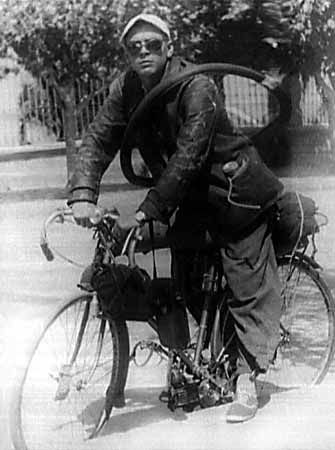Author: Jon Lee Anderson
Original Publication Date: March 1997
Pages: 832
“Shoot, coward, you are only going to kill a man.”
-Ernesto ‘Che’ Guevara’s last words* (Anderson, 1991:735)

Those words make me shudder. And one will wonder, who this man is, that in his irrepressible idealism enlivened in clandestine activities and political conspiracies, dare deprive death of his satisfaction, for indeed decades later, Comandante Che, is now heroically revered.
Born Ernesto Guevara de la Serna, Che Guevara, was, unlike the ideology he died for, born in an affluent family of landed Argentinean elites, albeit a family on a sole route certain to lead them to modest living later on. Ernestito, as he was fondly called, was born with asthma, and throughout his life, this will limit and define him.
At 7, barred by his recurring and debilitating asthma attacks from engaging in strenuous activities reinforced by a concrete mother-son relationship, Ernesto developed a love for literature. He was, in most instances in his life, a voracious reader.

The Young Che groomed in an elite society
At 16, “Everything began with literature for him” (89). At this age he has quoted Freud and Nietzsche in his journal. He read Jack London, Bertrand Russell, Faulkner, Kafka, Camus, and Sartre. Most often, he said, Neruda was his favorite.

At 25, While in Medical School, Ernesto has traveled a sizeable part of South America first through his bicycle later outfitted with a motor and later with a motorbike. The travels are of monumental importance, in this austere travels characterized by the occasional begging of food and hitch-hiking rides, Che met the people of South America and for the first time saw the world through their forgotten faces and unheard voices. Indeed he writes, “The person who wrote these notes died upon stepping once again onto Argentine soil. The person who edits and polishes them, me, is no longer. At least, I am not the person I was before. The vagabonding through ‘America’ has changed me more than I thought.” (167)

Che with his faithful bicycle he used for travelling
At 27, He meets Fidel and Raul Castro, who will later on invite him in, to which he giddily joined, the July 26 Movement for the liberation of Cuba from Batista. This critical step launches Ernesto away from his paradoxical behavior of complete apathy and radical declamations that characterized his earlier years. “I will be with the people, and i know it because I see it etched in the night that I, the eclectic dissector of doctrines and psychoanalyst of dogmas, howling like one possessed, will assault the barricades or trenches, will bathe my weapon in blood and, mad with fury, will slit the throat of any enemy who falls into my hands." (201)
At 32, The July 26 Movement finds daylight, Batista flees the country, and a newly established revolutionary government with Fidel Castro as the head pronounced Che Guevara as a Cuban Citizen by birth. Che helps implement land reforms and literacy improvement projects in the liberated Cuba.

Che with Castro
At 36, He left his ministerial position, commander’s rank, and family to spark off new revolutions.
At 39, Che Guevara was caught in Bolivia, while tied down and kept as a prisoner, he was shot to death, his hands were cut-off, and buried in an unmarked mass grave. The remains were exhumed and later found through a confession of a retired Bolivian General who came clean to this book’s author.
__________
Jon Lee Anderson made a splendid job writing this biography. He was an international investigative reporter, war correspondent and staff writer for The New Yorker. His fastidiousness and training as an investigative writer was thoroughly employed in an outstanding manner. This is a well researched work grounded on extensive and exclusive primary sources that were given to Anderson when he approached Che Guevara’s widow, Aleida March, a distinction other written biographies lack that inevitably strips them of some semblance of true portrayal of Che’s life if not sheer outright veracity that led to biographies that have often resulted to sanctimonious and romanticized accounts.
Anderson’s narrative is fluid and light. He presents the social milieu operative in Che’s environment and in so doing, the reader is made to understand how this helped shape the man. Anderson intermittently interjects his intuitive comments on the narrative which are always rational if not factual. What I have come to appreciate the most was Anderson’s tone in writing which was, if not totally objective, was not defined by a ‘western’ bias in the least.
This is a great piece of work not only because of Anderson’s capacity and technical aspects in writing but more so in what it has substantially achieved. He was able to peel layers and layers of laudatory accounts and legends on this icon and revealed the man within.
Did I enjoy reading this biography? Definitely, yes!
Did I come to know Ernesto ‘Che’ Guevara? Yes!
Will I recommend this? This is the book one must read to know Che Guevara.
________
*Accounts vary on this, and the incident itself has attained an exalted position, sometimes mythologized. Other accounts point that this is Che’s last written word as contained in his Bolivian diary.











